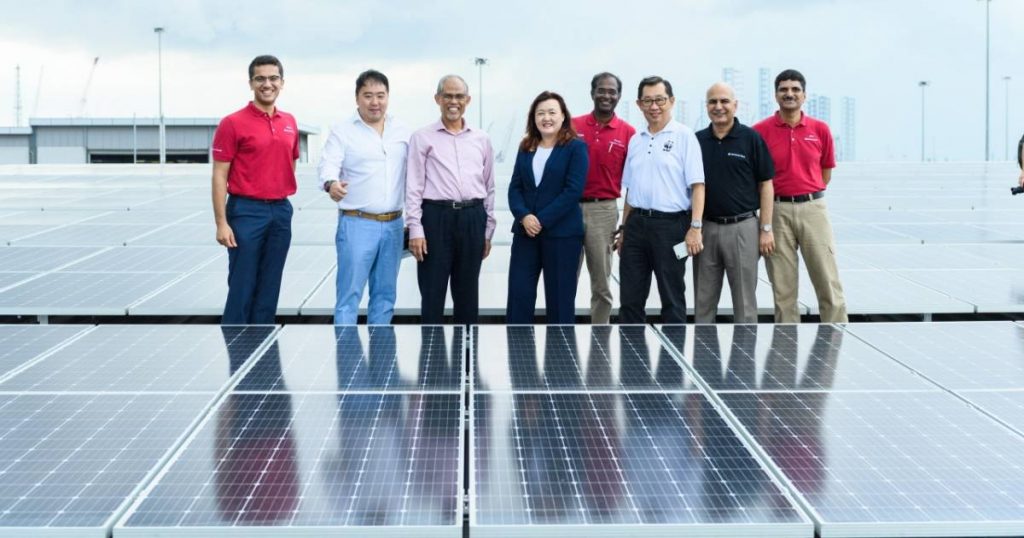Kimberly-Clark has flipped the switch on huge rooftop solar power system that will generate equivalent to 15% of the electricity used by its Huggies diaper (nappy) and baby wipe factory in Tuas, Singapore.
The company says the 7,730 solar panels mounted on the factory’s roof will generate “3.5 gigawatt hours of clean energy” – assumed to mean 3.5 gigawatt-hours of electricity a year.
“Switching on this solar roof marks a new milestone in our sustainability journey and accelerates our progress towards our goal of achieving a 20% reduction in GHG emissions globally, by 2022,” said Achal Agarwal, President, Kimberly-Clark Asia Pacific.
The installation was performed by Sunseap Group, a major PV installer in Singapore. Sunseap also has projects on the board in Australia, including Shell’s Delga Solar Farm1. Back in 2017, Shell invested in Sunseap Group, with view to collaboration on solar projects in the Asia Pacific.
So, will we see these (partly) solar power produced Huggies disposable nappies in Australia?
Well, according to the official Huggies site’s product alert page:
“The Huggies® Team has also become aware that some Huggies® Products manufactured outside Australia are being offered for sale in Australia (both in store and online),” it states. “Whilst the packaging may look very similar to the Huggies® products you know, the imported nappies have not been designed for Australian mums and dads and will not give the same level of performance as the nappies you are used to.”
Designed for Australian mums and dads? Same level of performance? But hang on, that oddly worded statement aside, just last month the company announced the closure of its Australian plant in July, and:
“Going forward, production will move to Kimberly-Clark’s facilities in Asia, enabling faster access to the latest research and engineering advancements in nappies and pants.”
So, it’s possible Australians will be buying Huggies produced using energy generated by solar panels soon. Perhaps there will a production line for Australia only, cranking out nappies with the same level of performance so Australian mums and dads don’t suffer nappy rash.
Getting back to Kimberly Clark’s solar efforts, this isn’t the first major solar installation for the company – it has been pursuing PV for at least a decade. I found reference to a 100kW system installed back in 2009 that was expanded in 2011 to 4.9MW. That’s a massive rooftop solar array, even by today’s standards.
Trivia: Apparently, 3.75 million disposable nappies are used every day in Australia and New Zealand, which works out to around 1.37 *billion* a year. Sustainability Victoria says it takes about one cup of crude oil produce a disposable diaper, and conventional disposable nappies are estimated to take up to 150 years to break down once discarded. As for baby wipes and wet wipes generally, these products can cause problems when flushed. They have been known to block pipes, create “fatbergs” in sewers and jam up equipment at sewage plants and pumping stations. Often made with plastic fibres along with cotton or wood pulp products and a variety of chemicals, wet wipes are generally environmentally problematic.


 RSS - Posts
RSS - Posts



Diapers & Baby Wipes. If this isnt Greenwashing…
Disposable nappies are tailored for the country they are sold in. For example, in Japan they demand both high quality and good stink control. But we cheese eating gaijin are a bit more tolerant of bad smells.